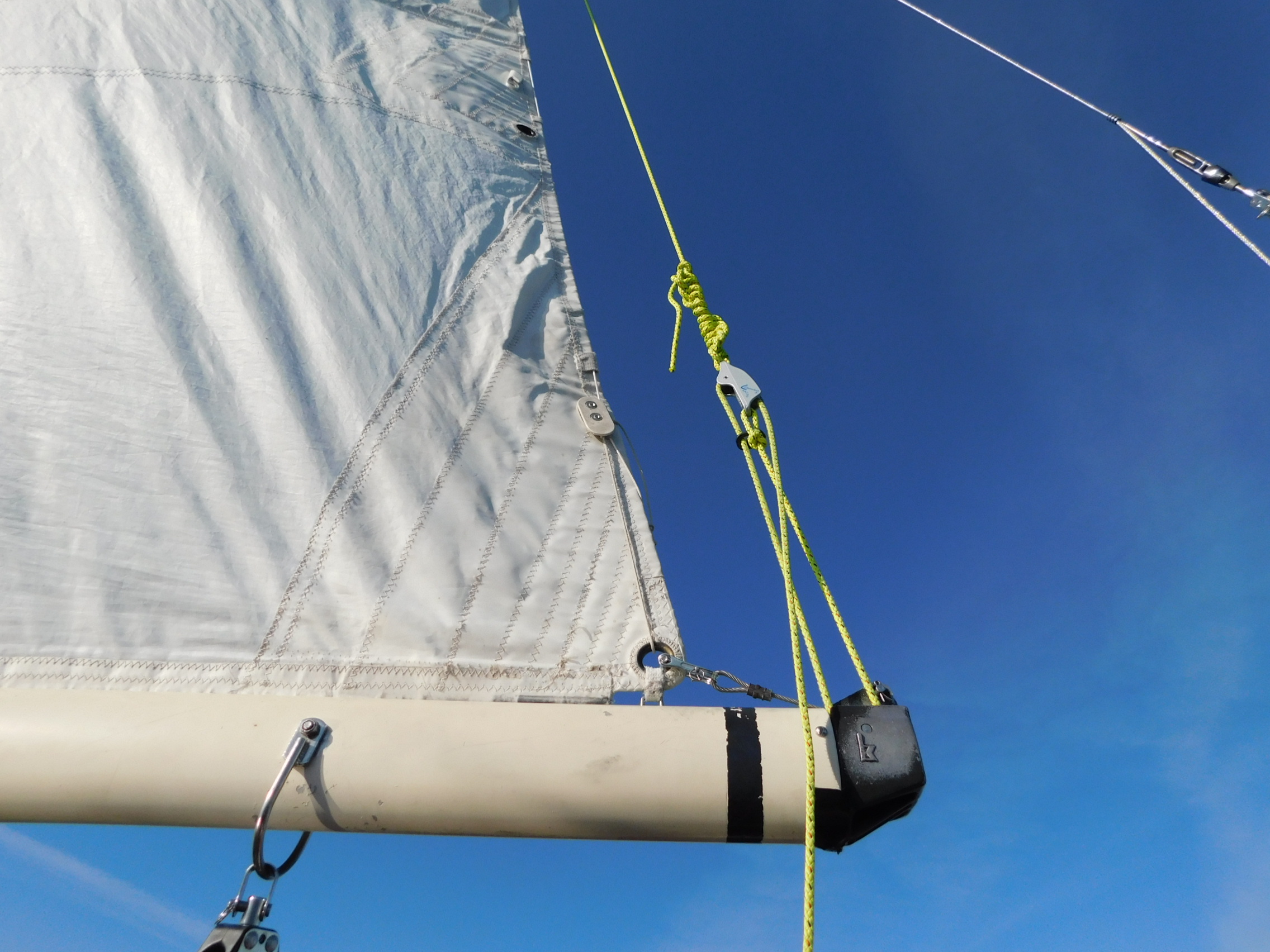Topping Lift on:
[Wikipedia]
[Google]
[Amazon]

 The topping lift (more rarely known as an uphaul) is a line which applies upward force on a
The topping lift (more rarely known as an uphaul) is a line which applies upward force on a
 The topping lift (more rarely known as an uphaul) is a line which applies upward force on a
The topping lift (more rarely known as an uphaul) is a line which applies upward force on a boom
Boom may refer to:
Objects
* Boom (containment), a temporary floating barrier used to contain an oil spill
* Boom (navigational barrier), an obstacle used to control or block marine navigation
* Boom (sailing), a sailboat part
* Boom (windsurfi ...
on a sailboat
A sailboat or sailing boat is a boat propelled partly or entirely by sails and is smaller than a sailing ship. Distinctions in what constitutes a sailing boat and ship vary by region and maritime culture.
Types
Although sailboat terminology ...
.
Part of the running rigging
Running rigging is the rigging of a sailing vessel that is used for raising, lowering, shaping and controlling the sails on a sailing vessel—as opposed to the standing rigging, which supports the mast and bowsprit. Running rigging varies bet ...
, topping lifts are primarily used to hold a boom up when the sail is lowered. This line would run from near the free end of the boom(s) forward to the top of the mast. The line may be run over a block at the top of the mast and down to the deck to allow it to be adjusted. For small booms, the topping lift may be run from end of the boom to the backstay
A backstay is a piece of standing rigging on a sailing vessel that runs from the mast to either its transom or rear quarter, counteracting the forestay and jib. It is an important sail trim control and has a direct effect on the shape of the ma ...
or next mast aft. When the sail is raised again, the topping lift is loosened or removed. On sailboats used for racing, boom lift function is frequently incorporated into the boom vang
A boom vang (US) or kicking strap (UK) (often shortened to "vang" or "kicker") is a line or piston system on a sailboat used to exert downward force on the boom and thus control the shape of the sail.
The Collins English Dictionary defines it ...
system, to reduce the number of lines aloft. Allowing the vang to take this function also simplifies operation of the boat.
On larger or older sailing vessels, lifts known as "quarter-lifts" run to the middle of the boom. When the sail is raised, the quarter-lift on the leeward
Windward () and leeward () are terms used to describe the direction of the wind. Windward is ''upwind'' from the point of reference, i.e. towards the direction from which the wind is coming; leeward is ''downwind'' from the point of reference ...
side must be slack, otherwise it will cut into the sail and cause it to lose its shape. When tacking, the new windward lift must be tightened and the new leeward lift let out.
A topping lift may also refer to a line on the front of the mast used to rig the spinnaker pole. It is used to trim the pole to the proper height when hoisting the spinnaker
A spinnaker is a sail designed specifically for sailing off the wind on courses between a reach (wind at 90° to the course) to downwind (course in the same direction as the wind). Spinnakers are constructed of lightweight fabric, usually n ...
.
References
{{Sail Types Sailing rigs and rigging